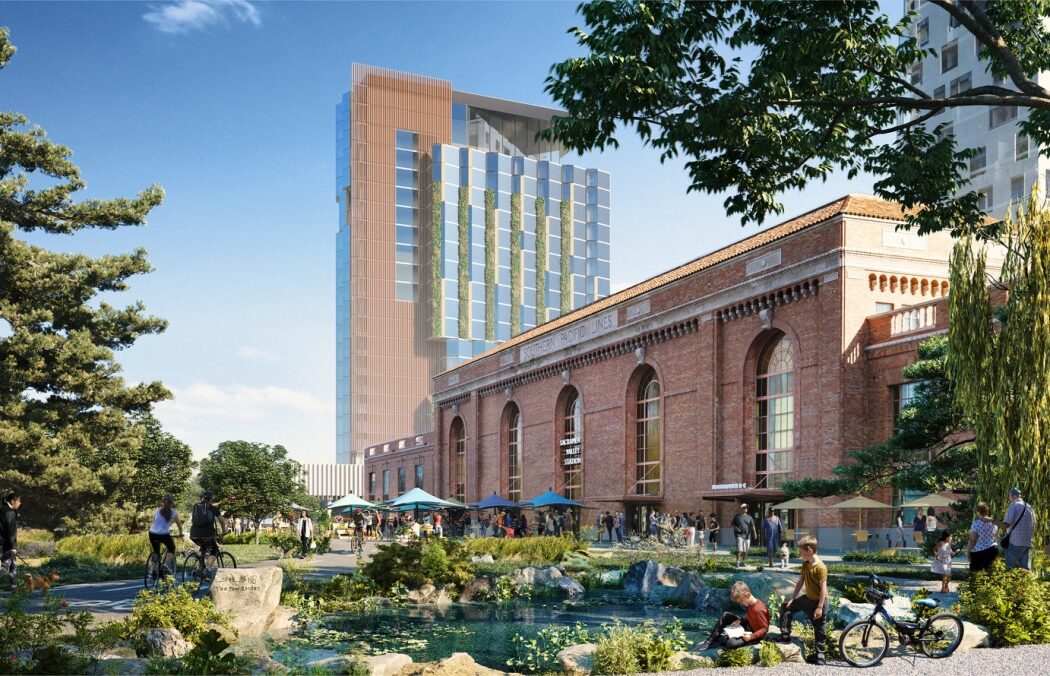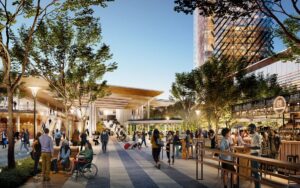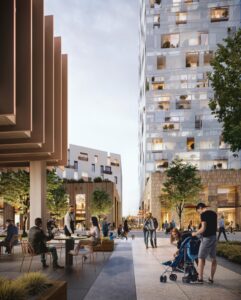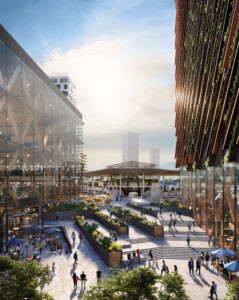An effort to make Sacramento, California’s historic train station one of the most sustainable public places in the state has earned a coveted certification for environmental innovation.
The Living Community Challenge Vision Plan Certification, which was awarded to the Sacramento Valley Station Area Plan in April of 2021, bolsters Sacramento’s leadership in championing regenerative, resilient urban design.
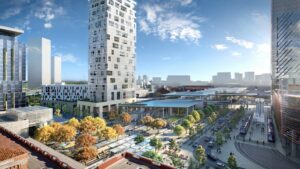 Led by the City of Sacramento and global design firm Perkins&Will, in partnership with ARUP and Grimshaw Architects, EPS and AIM Consulting, the Sacramento plan is the first of its kind to achieve this prestigious recognition.
Led by the City of Sacramento and global design firm Perkins&Will, in partnership with ARUP and Grimshaw Architects, EPS and AIM Consulting, the Sacramento plan is the first of its kind to achieve this prestigious recognition.
The Living Community Challenge (LCC) provides a framework for master planning, design and construction that seeks to create a symbiotic relationship between people and all aspects of the built environment.
As an advanced measure of sustainability, the LCC rewards plans that are socially just, culturally rich and ecologically restorative. It focuses on seven key metrics: place, water, energy, health and happiness, materials, equity, and beauty.The Area Plan transforms Sacramento’s historic train station into a self-reliant and regenerative transportation hub and gateway for the City.
All buildings within the development will run on 100% renewable energy through a combination of onsite and offsite power generation.
The water used throughout the development is captured and recycled to meet 100% of the community’s non-potable water needs.In drought-prone California, the Regenerative Utility Center, which houses the district energy facility and the wastewater treatment facility, will serve to educate the public and celebrate the efficient use of natural resources.
Geeti Silwal, a principal and urban designer at Perkins&Will, explains that the placement of market-rate and affordable housing, office space, hotel, community spaces, and amenities like restaurants, shops, pedestrian plazas, and bike trails complement the convergence of trains, regional and local buses, light rail, and micro-transportation offering at this regional multi-modal hub.
She added that the goal is to “make the Sacramento Valley Station area more than just a point along a journey, but a destination of its own.”The LCC framework measures sustainability beyond standard metrics – it also means that the Plan promises to improve daily life for Sacramento residents. The design team took great care to involve the local community in the process, holding numerous public meetings with more than 50 stakeholder groups.
“Our work is people-centric, and the resulting designs reflect where the community wants to go, both metaphorically and in actuality,” continued Silwal.
“It has been refreshing to work with Sacramento’s visionaries and thought leaders – they truly understand the imperative of big moves as we aim to address our changing climate,” she concluded.
The City Council has unanimously accepted the plan.
All renderings courtesy of Perkins&Will.

